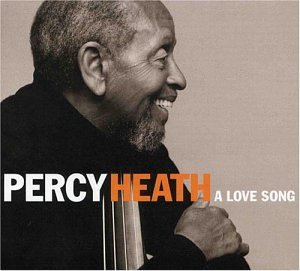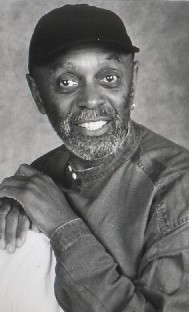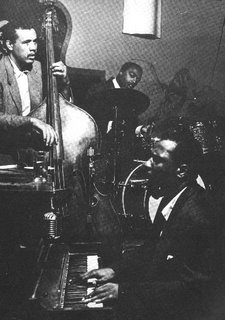Thelonious Monk - Piano , Charlie Rouse - tenor sax, Larry Gales - bass; Ben Riley - Drums
Thelonious Monk is one of the most important pianists in jazz and music in general. His playing, his style influenced by bebop and all that he created himself and now a basic treasure every good jazz pianist heard all that jazz music had a crucial impact.
Monk bereicherte die Welt jedoch nicht nur mit seinem unvergleichbarem Spielen und seinen Aufnahmen, auch die vielen Kompositionen von ihm, wie zum Beispiel "Round Midnight", "Ruby, My Dear" oder "Well, You Needn’t", hinterließen Spuren in der Jazzmusik. Zu diesen Stücken, die heute allesamt oft gespielte Jazzstandards sind, gehört auch die Kompositionen "Blue Monk", die in diesem Video zu hören ist.
Die Band, bestehend aus Monk selbst am Klavier, Charlie Rouse am Tenorsaxophon, Larry Gales am Bass und Ben Riley am Schlagzeug, die diese Komposition am 15. April, 1966 in Oslo auf einer Europatournee spielte, gehörte zu einer von Monks wichtigsten und besten Bands in seiner Karriere und die entstandene Aufnahme ist ein wahrer Mastertake.
Monk bereicherte die Welt jedoch nicht nur mit seinem unvergleichbarem Spielen und seinen Aufnahmen, auch die vielen Kompositionen von ihm, wie zum Beispiel "Round Midnight", "Ruby, My Dear" oder "Well, You Needn’t", hinterließen Spuren in der Jazzmusik. Zu diesen Stücken, die heute allesamt oft gespielte Jazzstandards sind, gehört auch die Kompositionen "Blue Monk", die in diesem Video zu hören ist.
Die Band, bestehend aus Monk selbst am Klavier, Charlie Rouse am Tenorsaxophon, Larry Gales am Bass und Ben Riley am Schlagzeug, die diese Komposition am 15. April, 1966 in Oslo auf einer Europatournee spielte, gehörte zu einer von Monks wichtigsten und besten Bands in seiner Karriere und die entstandene Aufnahme ist ein wahrer Mastertake.

















